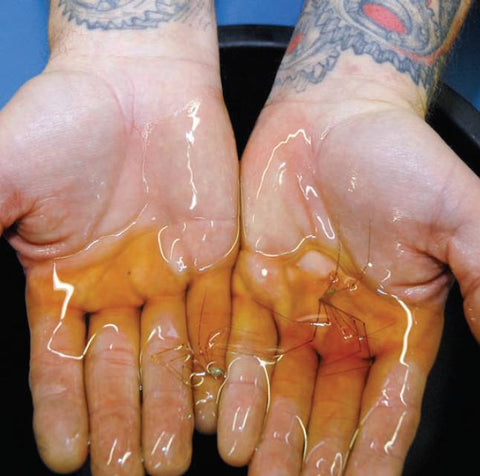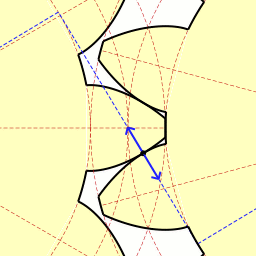
More transmissions than you might believe get returned to BAKER Drivetrain for repair because the end user forgot to put oil in the unit. The complaint is usually excessive noise and difficulty shifting gears. Upon disassembly, we find gear teeth with beautiful hues of blue, gold, and purple. When we notify the customer of our findings, quite often they will swear up and down that they put oil in the transmission. But there are only two ways that gear teeth turn blue, gold, and purple. The first way is to closely examine the gear teeth in bright sunlight about two hours after dropping three hits of acid. The second way is for gears to run without oil. Gear teeth turning blue, gold, and purple bathed in oil is as likely as President Obama having one of those special cone shaped white hoods in his closet.
The gears, shift system, and bearings in a Harley-Davidson transmission are splash lubricated, which means the churning action of the constant mesh gears kicks up and distributes oil when the transmission is in operation. The oil distribution and transmission function can be viewed with one of our Voyeur see-through top covers; pretty cool stuff. It is a very simple but very effective way to distribute the oil in the proper order of importance. That is, the shift system and bearings get lubricated by splash oil and oil mist which is more than adequate to keep them running smoothly. The gears, on the other hand, get continually coated by fresh oil and that’s a good thing because the points of contact between two gears in mesh are subjected to very high stresses.

Look up “involute gear” in Wikipedia to view an animated simulation of two gears in mesh. As shown, the gear teeth come together in a mesh as the involutes (gear tooth profiles) of a gear and its mate roll together. The full torque of the engine (plus torque multiplication through the primary drive) is transmitted up and down the gear teeth, in a point-contact fashion, as gears roll together in mesh. In the world of machinery and mechanisms, this is referred to as “point loading”; it shears and fornicates the heck out of the poor little oil polymers over and over.
Modern oils are complicated, and transmission oils are no exception. Gear lubes carry a GL rating, which defines how much pressure (load between gears) they can withstand. The most common ratings today are GL-1 and GL-5.
GL-1 lubes have a much lower pressure rating than GL-5 oils.
Gear lubes come in many viscosities (weights), with the most common being 75w90, 75w140, and 85w140. Imagine these oil polymer molecules looking like a spider… when the oil is cold the spider’s legs contract (like a dead spider), which lets the polymers bounce off each other, creating easier flow. Flow in oil is measured as viscosity, so when the oil is cold the viscosity is lighter (the 75 part of 75w140). As temperature increases, the spider’s legs open up and connect with the “legs” of other polymer molecules, making the oil thicker and increasing viscosity. This is how oil can change weight from 75 to 140 with a change in temperature. When oils are sheared with miles of use, the “legs” are cut off, preventing the polymer molecules from linking together and making the oil unable to change viscosity.
Besides pressure ratings, chemistry is different between GL ratings, and normally they don’t interchange. Most GL-5 rated lubes are not compatible with GL-1 applications because GL-5 oils contain high pressure additives that attack “bright metals” such as copper, brass, and bronze that can be found in some transmissions. Oils such as Spectro 6 Speed contain special buffers that allow this GL-5 rated oil to be used in GL-1 applications without fear of bright metal damage. GL-1 oils should never be used in GL-5 applications. They won’t cause any physical damage to metals but they also won’t stand up to the intense pressure found in a GL-5 environment.
Syn3 is nothing more than 20w50 synthetic motor oil. It will work in a transmission if there is nothing else available but there’s no good reason to use it when there are better choices. Motor oils are designed to lubricate motors, not transmissions, and they have totally different chemistry. Gear lubes use generous amounts of Zinc (zddp), phosphorus, and other extreme pressure anti wear additives not found in motor oils. They don’t need much in the way of detergents (no fuel, carbon or ash contamination in transmissions).
So if you don’t want the gear teeth in your transmission to turn blue, gold, and purple, do the following:
Keep your transmission filled with a quality GL-5 rated oil and change it every 5000 miles or once a year to keep fresh legs on the spiders.
Don’t drop acid.
~Bert Baker, Originally written for IronWorks magazine
